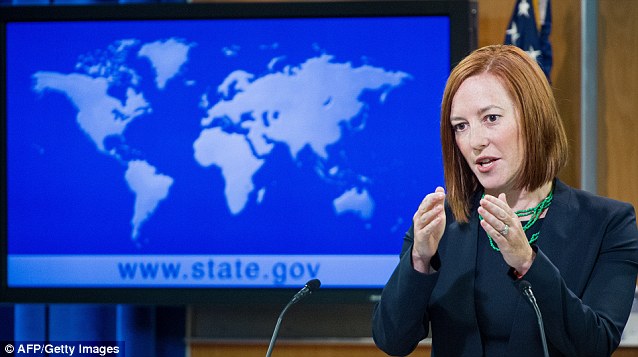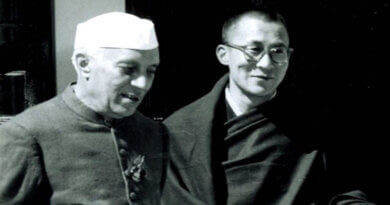Will Tibet ever find her soul again?
Claude Arpi, Niti Central | January 8, 2015
Recently, I came across an interesting historical document; it is the Annual Report of the Indian Trade Agency in Gyantse (Tibet) for the year 1952-53. It is written by the Indian Trade Agent (ITA), Maj. S.M. Krishnatry. Posted in Gyantse, then the second city in Tibet, Krishnatry informs his bosses in the Ministry of External Affairs in Delhi (Jawaharlal Nehru was then the Minister) about what the situation in Tibet, a few months after the People’s Liberation Army marched into the Land of Snows. Krishnatry writes:
“Perhaps the historians will not fail to record that the year marked out a period of great success for the Chinese communists in their plans to incorporate Tibet as an integral part of New China. The process of subjugation and the struggle with the recalcitrant masses and peasantry of Tibet is just beginning to show signs in favour of Chinese success; and looking back retrospectively, it is obvious that the communist dictatorship is now far too well dug in and consolidated and has come to stay.”
The Chinese are first and foremost strategists; according to the ITA:
“They concentrated on quickly improving their communications and roads and rapaciously grabbing all they could find in the way of foodstuffs and other supplies.”
Krishnatry then concludes:
“They aimed, by means of virile and strong blows of propaganda, to capture the heart and soul of Tibetans and won. Will Tibet ever find her soul again?”
Sixty-three years later, has Tibet recovered her soul?
The official Chinese press has recently written a great deal about Tibet’s achievements in 2014, and Beijing’s expectations for the coming year. A website associated with Xinhua, chinatibetnews.com conveys the gist:
“Tibet’s tourist revenue in the first three quarters of 2014 reached 16.382 billion yuan (2.68 billion U.S. dollars) accounting for 24.76 percent of its regional annual GDP in the same period.”
Nearly a quarter of Tibet’s GDP comes today from tourism. It is massive; the Roof of the World has indeed become a mega tourist park; and then, adds the website:
“By 2015, Tibet is aiming to receive 15 million tourists from home and abroad …to meet the demand of the domestic and international market as a world tourist destination.”
Another website, China Tibet Online goes into details:
“In 2014, the Tibet Autonomous Region took various measures to boost its tourist industry …giving people from other areas of China access to tourist information about Tibet.”
You can call it the Disneyland of Snows!
While the Government of India still prevaricates about opening Arunachal Pradesh to tourism without cumbersome Inner Line Permits (or Protected Area Permits for the foreigners), China has unlocked the gates of adjoining areas:
“The southeast Tibet’s Nyingtri Prefecture received 2.8 million tourists in 2014, earning a revenue of 2.6 billion yuan [450 million US dollars], up 12 and 14% respectively in a year. The tourist industry has become the first industry in the prefecture.”
Wang Jun, director of Nyingtri Tourism Bureau says that in 2015, Nyingtri will have a ‘World Ecological Tourism Zone’ with tourist attractions and ecological villages.
Does ‘sleepy’ India realise that this ‘development’ lies just north of the Indian border (let us not forget that China still claims the entire Arunachal Pradesh as Southern Tibet)?
The media announced that the remote Metok County, located a few kilometres north of Arunachal’s Upper Siang district (where the Yarlung Tsangpo/Siang/Brahmaputra enters India) will be further developed in 2015:
All the villages in the County will soon have uninterrupted power supply. Knowing the difficulty of access to the area, it will be a great achievement; in contrast, the populations of many isolated Indian villages south of the McMahon line, still dream to have proper road access.
The Chinese press predicts other forthcoming achievements.
All Tibet’s 75 lakes will be protected, for which a new standard will include water quality and ecological management.
All farmers and herders will be provided with safe drinking water.
Tibetan arts and crafts, such as thangka painting, will be encouraged; new standards for the preservation and development of this traditional art will be promulgated and artisans will get State sponsorship.
The GDP of Shigatse, which was upgraded to a municipality in 2014, will reach 12% by the end of 2015, while the net annual income of farmers and herders will rise to 13%.
And again and always tourism: Tibet is to build up 1,000 star family hotels, 10 model tourist counties, 20 tourist townships, 200 tourist villages; winter tourism will be promoted:
“Tibet will get half price in Tibet’s tourist attractions especially Mt. Qomolangma [Everest] from November to March.”
China Tibet Online listed the 10 top news stories for 2014.
The best story of the year was about the 60th anniversary of the completion of Qinghai-Tibet highway:
“The lifeline for the Qinghai-Tibet Plateau. It has boosted the economic growth of regions along the road and enabled many people’s dreams to come true.”
The article quotes President Xi Jinping who called it a miracle for Tibet:
“The highways have played a vital role in Tibet’s social system, economic and social development, as well as consolidating the southwest frontiers and promoting national unity”.
Consolidating the border with India is never forgotten.
What the websites do not say is that 2014 has witnessed the largest numbers of military exercises on the plateau.
But let us come back to Krishnatry’s comments; he spoke of “virile and strong blows of propaganda, to capture the heart and soul of Tibetans.”
Soon after the New Year, Radio Free Asia reported that the Chinese police “attacked and beat members of a Tibetan farming family, leaving one in critical condition, after the group protested authorities’ efforts to force the sale of their land for construction of a police barracks”.
RFA’s source said that incident occurred on December 30 in Dzamthang county of Ngaba Tibetan Autonomous Prefecture. Four protesters were severely injured; one of them is said to be in a critical condition. The Tibetans were just protesting against the local government’s attempt to force them to sell their land for police barracks.
In another incident, also reported by RFA, two Tibetans sustained gunshot wounds while attempting to protect a monk who had self-immolated in protest against the Chinese policies. The incident occurred after Kalsang Yeshe, 38, set himself ablaze in the Kardze (Sichuan).” It was the second self-immolation within a week in the area.
China’s virile and strong policies have helped develop Tibet to a certain extent. The Tibetans are certainly economically better-off than 60 years ago, but it is clear that they are now slowly swamped by millions of Han tourists.
Will the Tibetans lose their soul under the tourist invasion? Will they become like the Native Americas in their reservations?
Till now, they have resisted, but for how long?
Born in Angoulême France, Claude Arpi settled in India 40 years ago. He is the author of several books on Tibet, Sino-Indian relations and French India.


